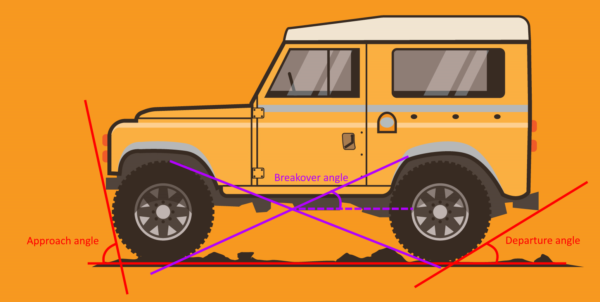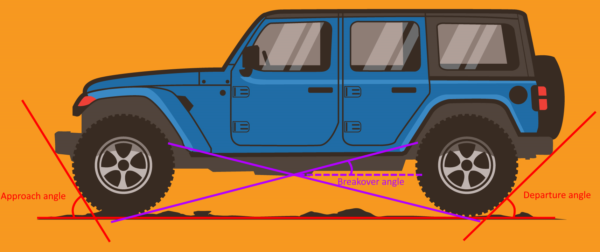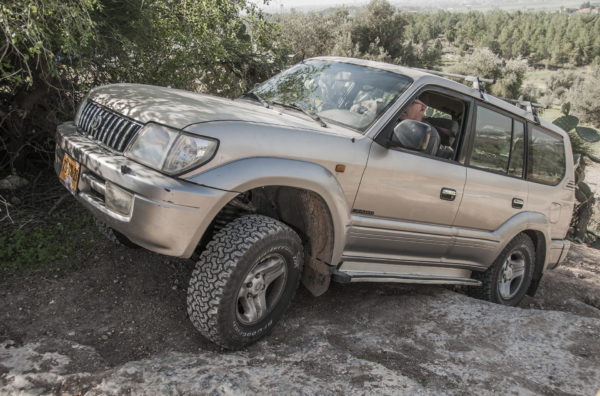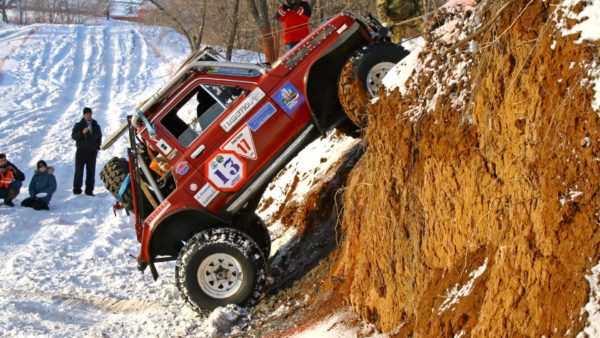Off-road vehicles have several important measures by which their competence on rough ground is assessed. Wading depth is one – how deep can water be before it gets into the engine and leaves you stranded in the middle of a river. Maximum gradient is another – what’s the maximum angle of slope you can drive on before you risk tipping over. But the most commonly cited figures are approach and departure angles and, to a slightly lesser extent, ramp breakover angle.
The approach angle is the maximum immediate change in angle that the front of a vehicle can cope with when approaching an uphill slope or leaving a downhill slope.
The departure angle is the maximum immediate change in angle that the rear of a vehicle can cope with when exiting a downhill slope onto flat ground or entering an uphill slope.
You can see that in the following two diagrams that approach and departure angle are affected by how close to the corners of the vehicles that the wheels are. This is determined by the wheelbase in relation to the overall length. The wheelbase is the distance between the two axles, or the centres of the front and rear wheels.


The purple lines describe the breakover angle.


